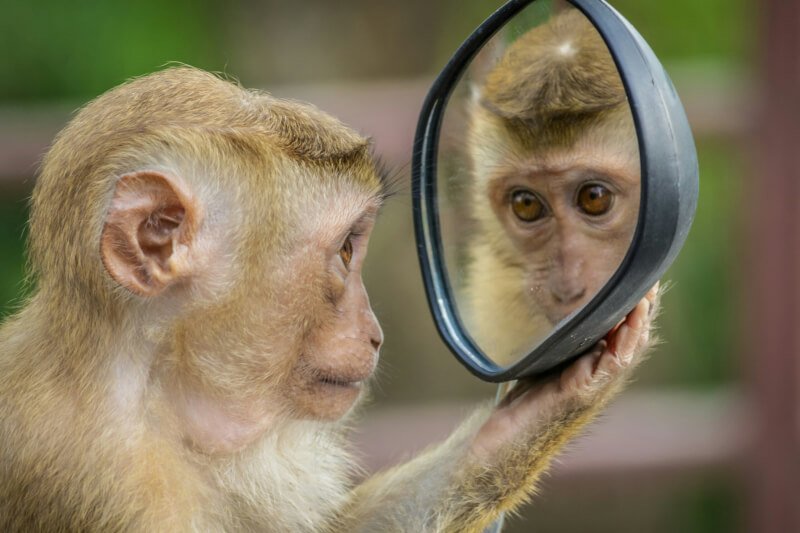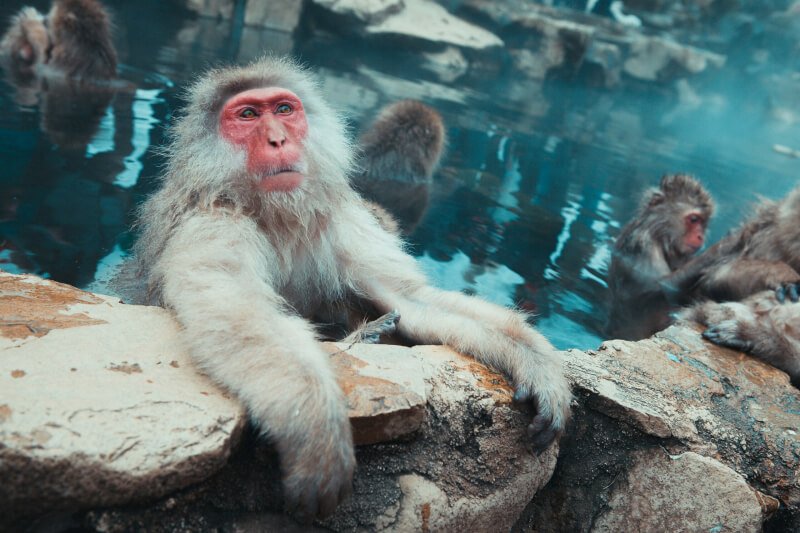Imagine being a primate – swinging from tree branches, communicating with fellow primates, and exploring the lush greenery of the jungle. Now, think about how important it is to ensure that these intelligent creatures have their emotional needs met while in captivity. In this article, we will explore the best ways to provide enrichment for primates’ emotional well-being, allowing them to thrive and lead fulfilling lives even in a non-natural environment. From creating stimulating environments to offering social opportunities, join us as we discover how to make a positive impact on our primate friends’ emotional lives.

Physical Environment
Providing Adequate Space
When it comes to providing enrichment for primates, one of the most important considerations is ensuring they have adequate space. Primates are highly active animals, and they require enough room to move, climb, and explore their surroundings. A cramped or confined space can lead to stress and frustration, which can negatively impact their emotional well-being. Therefore, it is crucial to provide primates with a spacious and well-designed enclosure that allows for natural movement and behavior.
Creating a Naturalistic Habitat
In order to meet the emotional needs of primates, it is vital to create a naturalistic habitat that mimics their natural environment as closely as possible. This involves incorporating elements such as trees, branches, rocks, and platforms to create a diverse and stimulating environment. By recreating their natural habitat, primates are able to engage in natural behaviors like climbing, swinging, and foraging, which helps to alleviate boredom and promote their overall well-being.
Offering Climbing Structures
Climbing is an essential aspect of a primate’s natural behavior, and providing them with appropriate climbing structures is crucial for their emotional enrichment. The use of platforms, ropes, and branches can help stimulate their natural instincts and provide them with opportunities to explore and navigate their environment. Climbing structures not only offer physical exercise but also mental stimulation as primates strategize and plan their movements. It is important to ensure that the climbing structures are sturdy, safe, and appropriately designed for the species of primates being housed.
Social Interaction
Encouraging Social Groupings
Primates are highly social animals, and social interaction plays a vital role in meeting their emotional needs. Therefore, it is important to provide opportunities for primates to engage in social groupings. This can be achieved by housing them in groups that are compatible and allow for natural social behaviors such as grooming, playing, and social bonding. Social groupings help to promote mental and emotional stimulation, reduce stress, and enhance overall well-being.
Facilitating Positive Social Interactions
Creating an environment that fosters positive social interactions is essential for the emotional enrichment of primates. This can be achieved by providing structures and spaces that encourage social bonding, such as communal feeding areas or grooming stations. Additionally, ensuring that there are plenty of hiding spots and retreat areas allows for individual primates to have personal space when needed. Positive social interactions help to promote a sense of security, reduce aggression, and enhance overall social dynamics within a primate group.
Introducing New Individuals
To further enrich the social lives of primates, it is beneficial to introduce new individuals into their social groups. This allows for new social dynamics to form, providing opportunities for social learning, adaptation, and increased mental stimulation. However, it is important to carefully plan and monitor introductions to ensure the well-being and safety of all individuals involved. Introducing new individuals should be done gradually and under the guidance of experienced primate care professionals.
Food Enrichment
Utilizing Foraging Activities
Foraging activities are an essential form of enrichment that helps satisfy the natural instincts and behaviors of primates. By scattering food throughout the enclosure or providing food hidden within puzzle feeders, primates are encouraged to engage in natural foraging behaviors. This not only provides mental stimulation but also promotes physical exercise as they search for and retrieve their food. Foraging activities can be tailored to the specific dietary needs and capabilities of each primate species.
Food Puzzle Toys
Food puzzle toys are a great way to provide mental stimulation and enrichment for primates. These toys are designed to challenge the primates’ problem-solving abilities, as they must figure out how to manipulate the toy to access the food inside. Food puzzle toys come in various shapes and sizes, allowing for different levels of difficulty and complexity. They provide a fun and interactive way for primates to engage with their food, promoting mental engagement and reducing boredom.
Variety in Diet
Offering a varied diet is an important aspect of providing enrichment for primates’ emotional needs. Just like humans, primates enjoy a diverse range of flavors and textures, and having a variety of food items can help keep their diets interesting and exciting. By providing a mixture of fruits, vegetables, nuts, seeds, and leafy greens, primates are able to experience different tastes and textures, which adds novelty to their daily routine. It is important to consult with a primate nutritionist to ensure that the diet remains balanced and meets the specific nutritional requirements of each primate species.
Sensory Stimulation
Visual Stimulation
Visual stimulation is an essential component of primate enrichment. By providing visual stimuli, such as colorful toys, hanging objects, or mirrors, primates are able to engage their visual senses and remain mentally stimulated. Visual stimulation can help alleviate boredom and provide a sense of novelty in their environment. It is important to regularly rotate and introduce new visual stimuli to keep the enrichment fresh and exciting for the primates.
Auditory Enrichment
Sound is another important sensory experience for primates, and providing auditory enrichment can greatly contribute to their emotional well-being. Playing nature sounds, calming music, or recordings of other primate vocalizations can help create a more naturalistic environment and promote relaxation and mental stimulation. However, it is crucial to monitor the volume and intensity of the auditory enrichment to ensure it does not cause distress or become overwhelming for the primates.
Tactile and Textural Experiences
Primates have a highly developed sense of touch, and providing opportunities for tactile and textural experiences is an important aspect of their enrichment. This can be achieved by offering various materials, such as soft bedding, branches of different textures, or manipulable objects with different surfaces. Tactile enrichment not only provides a sensory experience but also encourages exploration and engagement with the environment, promoting mental and physical stimulation.

Cognitive Challenges
Problem-Solving Activities
Engaging primates in problem-solving activities is a great way to provide cognitive challenges and enrichment. This can be done through the use of puzzle feeders, where the primates must figure out how to access the food inside, or through interactive toys that require manipulation or coordination. Problem-solving activities stimulate the primates’ cognitive abilities, promote mental engagement, and help develop their problem-solving skills.
Training and Enrichment Programs
Implementing training and enrichment programs can significantly contribute to the cognitive enrichment of primates. Training sessions can involve teaching the primates new behaviors or tricks, which not only provide mental stimulation but also promote bonding and trust between the caregivers and the primates. Enrichment programs can incorporate a variety of activities, such as obstacle courses, memory games, or training sessions specifically tailored to the abilities and preferences of each individual primate.
Use of Tools or Manipulatives
Introducing tools or manipulatives into the primates’ environment can provide cognitive challenges and enrichment opportunities. Objects such as puzzle boxes, tool-use devices, or toys that require manipulation can help stimulate problem-solving skills and encourage creative thinking. These tools or manipulatives should be safe and appropriate for the species of primates being housed, and regular monitoring is necessary to ensure they are being used correctly and safely.
Environmental Enrichment Schedule
Consistency and Routine
Establishing a consistent and structured environmental enrichment schedule is important for meeting the emotional needs of primates. Enrichment activities should be implemented regularly and consistently to provide a sense of predictability and security for the primates. By having a structured schedule, primates are able to anticipate and look forward to enrichment sessions, which helps alleviate boredom and promotes mental well-being.
Variety in Enrichment Offerings
While consistency is essential, it is equally important to provide a variety of enrichment offerings to prevent habituation and maintain their interest and engagement. Offering different types of enrichment activities, toys, and stimuli on a rotating basis ensures that the primates are constantly exposed to new and exciting experiences. Variety in enrichment offerings helps keep the primates mentally stimulated, curious, and engaged in their surroundings.
Rotation of Enrichment Items
To further enhance the effectiveness of enrichment, it is recommended to rotate and switch out enrichment items regularly. This prevents the primates from becoming bored with the same toys or stimuli and encourages exploration and mental engagement. By providing new and novel enrichment items, the primates are continuously stimulated and motivated to interact with their environment. It is important to carefully monitor the primates’ reactions and preferences to determine which items are most successful in providing emotional enrichment.

Novelty and Surprise
Introducing New Enrichment Items
Introducing new enrichment items is a great way to provide novelty and surprise to primate enclosures. By periodically introducing new toys, puzzles, or sensory stimuli, the primates are continuously exposed to new and exciting experiences. This helps prevent habituation and keeps them mentally stimulated and engaged in their surroundings. Careful observation and monitoring are necessary to evaluate the primates’ reactions and preferences to ensure that the new enrichment items are well-received and provide the intended emotional enrichment.
Changing the Layout of the Enclosure
Changing the layout of the enclosure can also provide novelty and surprise for the primates. This can involve rearranging climbing structures, adding new hiding spots, or introducing new features or elements to their environment. By changing the layout, the primates are encouraged to explore and adapt to the changes, stimulating their curiosity and problem-solving abilities. However, it is important to carefully plan and implement these changes to minimize any stress or discomfort for the primates.
Sudden Environmental Changes
Occasionally introducing sudden environmental changes can help provide additional surprise and novelty for primates. This can involve temporarily enclosing a new area for them to explore, introducing new scents or sounds, or even creating temporary barriers or obstacles to encourage problem-solving behaviors. Sudden environmental changes should be carefully planned and monitored to ensure the primates’ safety and welfare, and any potential stress should be minimized through gradual acclimation and careful observation.
Positive Reinforcement Training
Reward-Based Techniques
Positive reinforcement training involves the use of reward-based techniques to teach and reinforce desired behaviors in primates. By rewarding the primates with treats, praise, or other forms of positive reinforcement when they exhibit a desired behavior, they are motivated to continue performing that behavior. Positive reinforcement training not only provides mental stimulation and enrichment but also strengthens the bond between the caregivers and the primates, promoting trust and cooperation.
Teaching New Behaviors
Training primates to learn new behaviors is an effective way to provide cognitive challenges and enrichment. By teaching them to perform tasks such as retrieving objects, participating in medical procedures, or engaging in creative problem-solving activities, they are provided with mental stimulation and the opportunity to use and develop their cognitive abilities. Training sessions should be conducted in a positive and supportive environment, with clear communication and consistent reinforcement.
Promoting Trust and Bonding
Positive reinforcement training not only provides cognitive enrichment but also promotes trust and bonding between the caregivers and the primates. By using gentle and positive techniques, caregivers can establish a sense of safety and security for the primates, allowing them to feel comfortable and willing to participate in training sessions. A strong bond with their caregivers can significantly contribute to the emotional well-being and overall quality of life for primates.

Physical Exercise and Play
Encouraging Physical Movement
Physical exercise is crucial for the overall well-being of primates, and providing opportunities for them to engage in physical movement is an important aspect of their enrichment. Enclosures should be designed to allow for running, jumping, and climbing, providing ample space for the primates to engage in these natural behaviors. Regular exercise not only promotes physical health but also reduces stress, improves mood, and enhances overall mental well-being.
Swings and Hammocks
Swings and hammocks are popular forms of enrichment that allow primates to engage in physical exercise and play. These hanging devices provide a fun and stimulating way for primates to swing, sway, and relax in their enclosure. Swings and hammocks can be made from sturdy materials that are safe for the primates, and their positioning within the enclosure should encourage natural movement and exploration.
Stimulating Play Materials
Providing stimulating play materials is another effective way to engage primates in physical exercise and play. Toys such as balls, ropes, or puzzle feeders that require physical interaction and movement can encourage primate’s natural behaviors and instincts. These play materials should be safe, durable, and appropriate for the specific species and abilities of the primates. Regularly rotating and introducing new play materials helps maintain the novelty and interest for the primates, ensuring they remain mentally stimulated and engaged.
Appropriate Challenges
Ensuring Suitable Complexity
When providing enrichment for primates, it is important to ensure that the challenges presented are suitable for their cognitive abilities and physical capabilities. Enrichment should be neither too easy nor too difficult, striking a balance that allows for engagement and success. The complexity of the challenges presented should be tailored to the individual primate’s skill level and preferences, allowing them to learn, problem-solve, and explore at their own pace.
Increasing Difficulty Gradually
To continue promoting cognitive enrichment, it is beneficial to gradually increase the difficulty of the challenges presented to primates. This can involve introducing more complex puzzle feeders, increasing the complexity of training tasks, or creating more intricate climbing structures. Gradual increases in difficulty allow primates to continually develop their cognitive abilities, promoting mental engagement and preventing boredom. It is important to monitor the primates’ reactions and adjust the level of difficulty accordingly, ensuring they remain motivated and successful.
Individualized Enrichment Programs
To effectively meet the emotional needs of primates, it is essential to develop individualized enrichment programs that cater to their specific preferences, abilities, and needs. Each primate is unique and may respond differently to various forms of enrichment. By tailoring enrichment activities and challenges to the individual primates, caregivers can optimize their mental stimulation and ensure their emotional well-being. Regular observation and adjustment to the enrichment program are necessary to ensure that it remains effective and engaging for each individual primate.
In conclusion, providing enrichment for primates’ emotional needs requires a comprehensive approach that incorporates various aspects of their environment, social interactions, food enrichment, sensory stimulation, cognitive challenges, training, physical exercise, appropriate challenges, and novelty. By addressing these different aspects, caregivers can ensure that primates remain mentally stimulated, emotionally fulfilled, and enjoy a high quality of life in captivity. It is crucial to continuously monitor and adapt the enrichment program to meet the evolving needs and preferences of the primates, ensuring they experience optimal emotional well-being.



